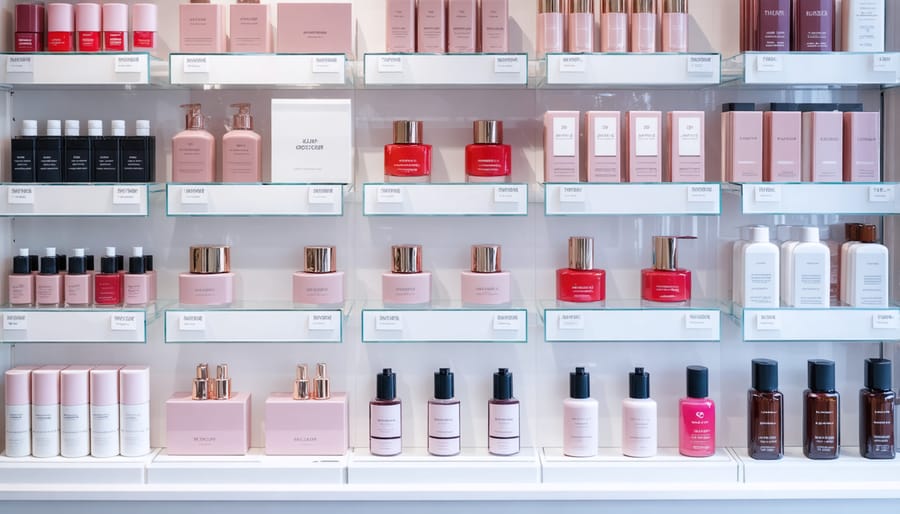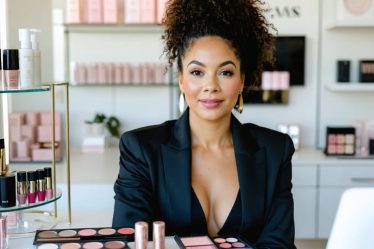
Transform your entrepreneurial dreams into financial success by mastering the core principles that drive successful beauty and lifestyle businesses. Learning to transform your beauty business starts with understanding the fundamental financial pillars that support sustainable growth.
Think of entrepreneurial finance as the foundation of your beauty empire – just like creating the perfect skincare routine, it requires the right combination of elements working together harmoniously. From managing cash flow with the precision of a master esthetician to forecasting growth like planning your next seasonal collection, these financial principles determine whether your business thrives or merely survives.
Whether you’re launching your first beauty brand or scaling an existing lifestyle business, mastering entrepreneurial finance isn’t just about crunching numbers – it’s about making informed decisions that align with your creative vision while maintaining profitability. Let’s dive into the essential financial strategies that will help you build a business that’s both beautiful and financially sound.
The difference between successful beauty entrepreneurs and those who struggle often comes down to their grasp of these fundamental financial principles. Ready to take control of your business’s financial future? Let’s explore the key elements that will set you up for lasting success.
Building Your Beauty Business Foundation
Starting Capital Secrets
Let me share a little secret from my own entrepreneurial journey: there are more ways to fund your dream business than you might think! When I first started, I was amazed to discover the variety of funding options available to aspiring business owners.
Personal savings are often the first go-to source, and I’ve seen many successful entrepreneurs start by setting aside a portion of their monthly income. Think of it as paying yourself forward – even small amounts add up over time. Start with a dedicated business savings account and commit to regular deposits, no matter how modest.
Family and friends can be wonderful initial investors, but here’s a pro tip: always treat these arrangements professionally with clear written agreements. I’ve witnessed beautiful relationships strain under unclear financial expectations, so protecting both sides with proper documentation is crucial.
Bank loans and credit lines are traditional routes, but don’t overlook alternative lending options. Many women-focused organizations offer special financing programs with competitive terms. Online lending platforms have also revolutionized access to capital, often with simpler application processes than traditional banks.
Angel investors and venture capitalists might be interested if your concept has significant growth potential. Remember, though, that these investors typically want more than just returns – they’re looking for innovative ideas that solve real problems in the market.
Consider crowdfunding platforms too, especially if you have a strong social media presence. These platforms not only help raise capital but also validate your business concept and build a community of supporters before you even launch.

Your Money Map
Creating your financial roadmap doesn’t have to feel overwhelming! Think of it as planning a beautiful journey – one where you can master your business finances with confidence and style. Start by listing all your expected income sources and expenses, just like you’d plan outfits for a week ahead.
Begin with your fixed costs – those predictable monthly expenses like rent, software subscriptions, and insurance. Then add variable costs such as inventory, marketing, and seasonal supplies. Don’t forget to include a buffer for unexpected expenses (trust me, they always pop up!).
For income projections, be realistic rather than optimistic. Consider your pricing strategy, expected sales volume, and seasonal fluctuations. If you’re just starting, research industry standards and adjust based on your local market.
Here’s a pro tip I learned the hard way: set aside 25-30% of your income for taxes and create separate accounts for business and personal expenses. This simple organization hack will save you countless headaches come tax season!
Remember to review and adjust your budget monthly. Think of it as a living document that grows with your business. Many successful entrepreneurs I know schedule regular “money dates” with themselves to stay on top of their finances and celebrate their progress.
Managing Your Daily Money Flow
Cash Flow Magic
Let me share a little secret from my years of working with beauty entrepreneurs: cash flow is like the heartbeat of your business. Just as your signature facial treatment follows a precise rhythm, your money needs to flow in a steady, predictable pattern to keep your business thriving.
Think of cash flow as your salon’s daily story told in numbers. It’s not just about how much you earn from that stunning bridal makeup package or your popular lash extensions – it’s about timing. When will that money actually land in your account? How does it align with when you need to pay your staff, restock your favorite serums, or cover the rent?
Here’s a practical tip I learned from Sarah, a successful spa owner: create a weekly cash flow ritual. Every Monday morning, she reviews three key numbers: expected incoming payments, upcoming expenses, and her current bank balance. This simple practice has saved her from many close calls with vendor payments.
Remember, healthy cash flow isn’t about having the most expensive treatments or the biggest client list. It’s about smart timing and planning. Start by mapping out your monthly fixed costs, then add a buffer for those surprise expenses (like when that fancy massage table needs unexpected repairs). Track every dollar coming in and going out, and always keep a cushion in your account – I recommend at least two months of operating expenses.
The beauty of mastering cash flow? It gives you the freedom to focus on what you truly love – making your clients feel amazing.
Smart Inventory Investment
Let me share a little secret from my own boutique days: smart inventory management can make or break your business! Think of your inventory like your wardrobe – you want just enough pieces to look fabulous without overwhelming your closet (or in this case, your budget).
Start by tracking your bestsellers religiously. I learned this the hard way when I once ran out of my most popular face serum during the holiday rush! Use a simple spreadsheet or inventory management app to monitor what’s flying off your shelves and what’s collecting dust. This data is pure gold for making informed ordering decisions.
Consider implementing the “just-in-time” approach – ordering stock only when you need it. This strategy helps preserve your cash flow while ensuring you meet customer demand. For example, if you know your holiday gift sets are hot sellers in December, start planning your inventory build-up in October rather than storing products all year.
Pro tip: Negotiate with your suppliers for flexible payment terms. Many will work with you on minimum order quantities or extended payment windows, especially if you’ve built a good relationship. And don’t forget to factor in seasonal trends – your lightweight moisturizers might be summer stars but winter wallflowers.
Remember, every product sitting on your shelf is money that could be working elsewhere in your business. Aim to turn over your inventory at least 4-6 times per year to maintain healthy cash flow while meeting customer needs.

Pricing Your Products Right
Let’s talk about one of the most important decisions you’ll make as a beauty entrepreneur – pricing your products. I remember when I first launched my skincare line, finding that sweet spot between profitability and market appeal felt like solving a complex puzzle. But don’t worry, I’ll break it down into manageable pieces!
Start by calculating your total costs – not just ingredients and packaging, but also overhead expenses like rent, utilities, and marketing. A good rule of thumb is to aim for a markup of 2.5 to 3.5 times your total cost per unit. This gives you room for promotions while maintaining healthy margins.
Consider your target market’s spending habits. Are you positioning yourself as a luxury brand or a more accessible option? Your pricing should align with your successful beauty brand strategy and overall market positioning.
Research your competitors, but don’t fall into the trap of constant price matching. Instead, focus on communicating your unique value proposition. Maybe it’s your sustainable packaging, organic ingredients, or personalized customer service that justifies a premium price point.
Don’t forget to build in some flexibility. Start with slightly higher prices – it’s easier to offer occasional discounts than to raise prices later. And remember, pricing isn’t set in stone. Monitor your sales data and customer feedback, and be ready to adjust your strategy as needed.
Growing Your Beauty Empire
Reinvesting for Growth
Let me share a valuable lesson I learned early in my entrepreneurial journey: reinvesting profits isn’t just about putting money back into your business – it’s about strategically growing your dream. Think of it as planting seeds in a garden; the more thoughtfully you invest, the more beautiful your business will bloom.
Start by identifying your growth opportunities. For many beauty and lifestyle entrepreneurs, this might mean expanding your product line, upgrading your salon equipment, or investing in better ingredients for your skincare products. I’ve seen firsthand how reinvesting even small amounts can lead to significant returns when done wisely.
Create a reinvestment strategy that aligns with your business goals. Consider allocating your profits into three main areas: operations (improving day-to-day efficiency), expansion (new products or locations), and innovation (research and development). For example, if you’re running a small beauty brand, you might invest 40% in better packaging, 35% in marketing, and 25% in developing new formulations.
Remember to maintain a healthy balance between reinvestment and personal income. While it’s tempting to pour everything back into your business, ensure you’re taking care of yourself too. Many successful entrepreneurs follow the 50-30-20 rule: 50% for business reinvestment, 30% for personal income, and 20% for savings and emergency funds.
Start small and scale gradually. Even reinvesting 10% of your monthly profits can make a significant difference over time. The key is consistency and making informed decisions based on your business’s unique needs and market opportunities.

Reading Your Numbers
Let’s be honest – numbers might not be everyone’s favorite part of running a business, but they tell an important story about your entrepreneurial journey. Think of your financial reports as your business’s diary, revealing what’s working and what needs a little TLC. Just like tracking your skincare routine results, monitoring your financial metrics helps you make better decisions for your beauty business.
Start with three essential reports: your income statement (showing your revenue and expenses), balance sheet (a snapshot of what you own and owe), and cash flow statement (tracking money moving in and out). These might sound intimidating, but they’re actually your best friends in understanding your business’s health.
Key metrics to watch include your gross profit margin (especially important when pricing luxury beauty products), operating expenses, and net profit margin. I remember when I first started tracking these numbers in my own business – it was like finally having a GPS for my business decisions!
Pro tip: Set aside “Money Monday” – a weekly date with your numbers. Even 30 minutes of reviewing your key metrics can help you spot trends and make smarter choices. Remember, you don’t need to be a math whiz; you just need to understand what these numbers mean for your business’s story and future.
Planning Your Next Steps
Let me share something I learned early in my entrepreneurial journey: planning for growth is like planning a garden – you need to think seasons ahead! When it comes to expanding your business, especially in the beauty and lifestyle space, strategic financial planning is your best friend.
Start by creating a detailed growth roadmap that outlines your business’s next 12-24 months. Include specific milestones like launching new product lines, opening additional locations, or expanding your online presence. For each milestone, calculate the expected costs and potential revenue streams.
Remember to build an emergency fund first – aim for 3-6 months of operating expenses. This gives you a safety net while pursuing growth opportunities. Next, explore different funding options that align with your goals. Whether it’s reinvesting profits, seeking investors, or applying for business loans, each path has its own advantages.
I’ve found that breaking down bigger financial goals into smaller, manageable targets makes them less overwhelming. For instance, if you’re planning to open a second location, create monthly savings targets and revenue benchmarks to track your progress.
Don’t forget to regularly review and adjust your plans. Market trends change, especially in the beauty industry, and flexibility is key. Consider working with a financial advisor who understands your industry to help refine your strategy and identify potential opportunities or risks you might have missed.
As we wrap up our journey through entrepreneurial finance, remember that managing your business’s finances doesn’t have to be overwhelming. By focusing on the fundamentals we’ve discussed – from cash flow management to investment strategies – you’re already taking important steps toward building a financially sound enterprise.
I’ve seen countless women entrepreneurs transform their businesses by implementing these principles, including a close friend who turned her small beauty blog into a thriving skincare brand. She started by mastering her cash flow basics and gradually built her financial confidence, just as you can.
Take action today by choosing one area we’ve covered and implementing it in your business. Maybe it’s setting up that separate business account you’ve been putting off, or finally creating that emergency fund. Remember, financial success in business isn’t about making huge changes overnight – it’s about consistent, intentional steps in the right direction.
Keep this guide handy as your financial reference, and don’t be afraid to revisit these concepts as your business grows. The beauty of entrepreneurial finance is that it grows with you, adapting to your business’s changing needs and goals.
You’ve got this! Start with small steps, celebrate your progress, and watch as your financial confidence grows alongside your business. Your future self will thank you for taking control of your financial journey today.



